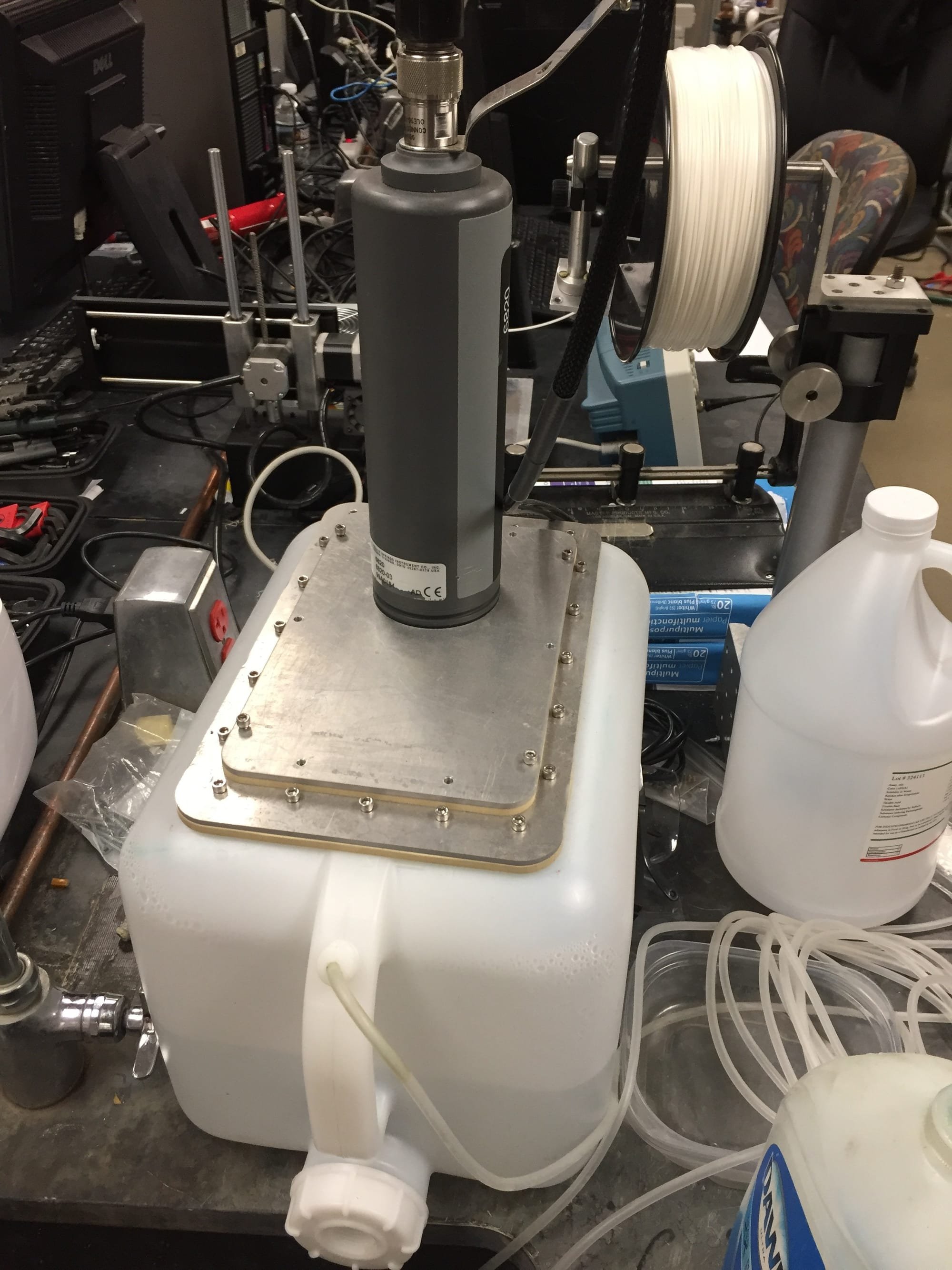Interdisciplinary
Time Commitment: 6-8 hours/week (semesters); 15-20 hours/week (summer)
The Dusty Plasma Lab, headed by Dr. Carlos Romero-Talamás, focuses students on magnetic confinement of dusty plasmas and related technologies. Laboratory research is fundamentally tied to Engineering the Tools for Scientific Discovery, however it is not always highly interdisciplinary; luckily, in my case, it is. The lab is considered an applied physics lab and is operated within the mechanical engineering department. Throughout my time as an undergraduate research assistant, I have had the pleasure of working with mechanical, aerospace, and electrical engineers, physicists, and computer scientists. Feeling a bit out of my element as the only chemical engineer in the lab, I worked closely with some of the graduate students to get situated. The diversity of specialties provided a well-rounded experience that taught me many new methods for conducting effective research. I liked how regardless of everyone having their own research focus, everything combined into an over-arching goal. It was neat to see many of the usually separated departments work together in the same space. I learned that in my career I would like to work in highly diverse teams because I feel as though the results are often intriguing and unique.

My individual research focused on mitigating corrosion effects within the electromagnet. Being water-cooled, the electromagnet is permanently exposed to dissolved oxygen (DO) in the coolant, which is the major contributor to the corrosion of copper, aluminum, and steel within these applications. In my experimental design, I utilized chemistry and electrical, chemical, and mechanical engineering concepts to accurately replicate conditions inside the electromagnet. In short, bubbling nitrogen through a water supply reduces DO concentrations, thus reducing corrosion rates. Mass loss tests using various acids are useful for quantifying the corrosion rates in both treated and non-treated samples. The samples, or coupons, were designed to recreate copper on copper and copper on aluminum contacts within the electromagnet. An occasional voltage drop applied to the coupons simulates a test of the entire magnet system. Coupon design and electrical systems were designed with assistance from graduate students in the respective fields. The experience has been a great way to learn about my career goals and how I operate within a team. I think, given more time to devote, I would easily fit into an interdisciplinary research position. However, I believe I would rather work in a faster-paced job that also had a great deal of connectivity between different expertise.
Meeting the Program-Wide Learning Objectives
Working in a lab requires one to act in a manner that best represents their ideals. It is a shared space, so acting with integrity and respecting the perspectives and ideas of others in the lab had a significant influence on the direction of my research. Teamwork is also important for proper lab work. As the resident chemical engineer, I offered advice to others when they had a chemistry question. On the other hand, I often relied on others for assistance with specific part of my research, such as setting up circuits or using machining equipment. In research, it is impossible to have a realistic vision 100% of the time, since you are constantly learning what is realistic and what is not. In my case, what I thought would be realistic time-wise, turned out to be slightly ambitious for the time I had to work. However, my ability to adapt and to be flexible has helped me persevere and overcome challenges repeatedly. The current version of my work is far from where I started because everything is constantly changing in a lab, which is partially why it is so much fun.

Meeting Interdisciplinary Learning Objectives
In the Dusty Plasma Lab, the research team consisted of mechanical, aerospace, electrical, and chemical engineers, as well as physicists and computer scientists, each with their own part to play. The interactions between specialties in a single work space was necessary due to the complex problems being solved. Asking for help when a specific portion of your research falls into another persons area of expertise is a great way to integrate different disciplines. Engineering projects in general are easy to combine disciplines due to their highly complex nature. Luckily, creating common ground within the lab was easy to do. Many of the individual projects had components that was specific to a certain discipline, and as a result, the common research goal acted as common ground. In addition, since many of the people working in DPL are engineers, we have some overlap in our academic backgrounds to help us connect.

